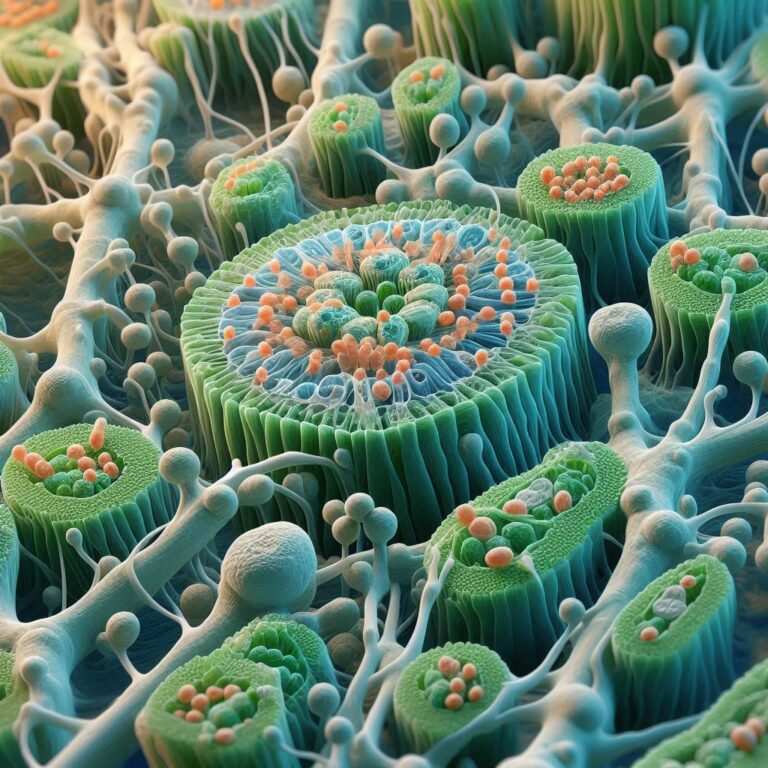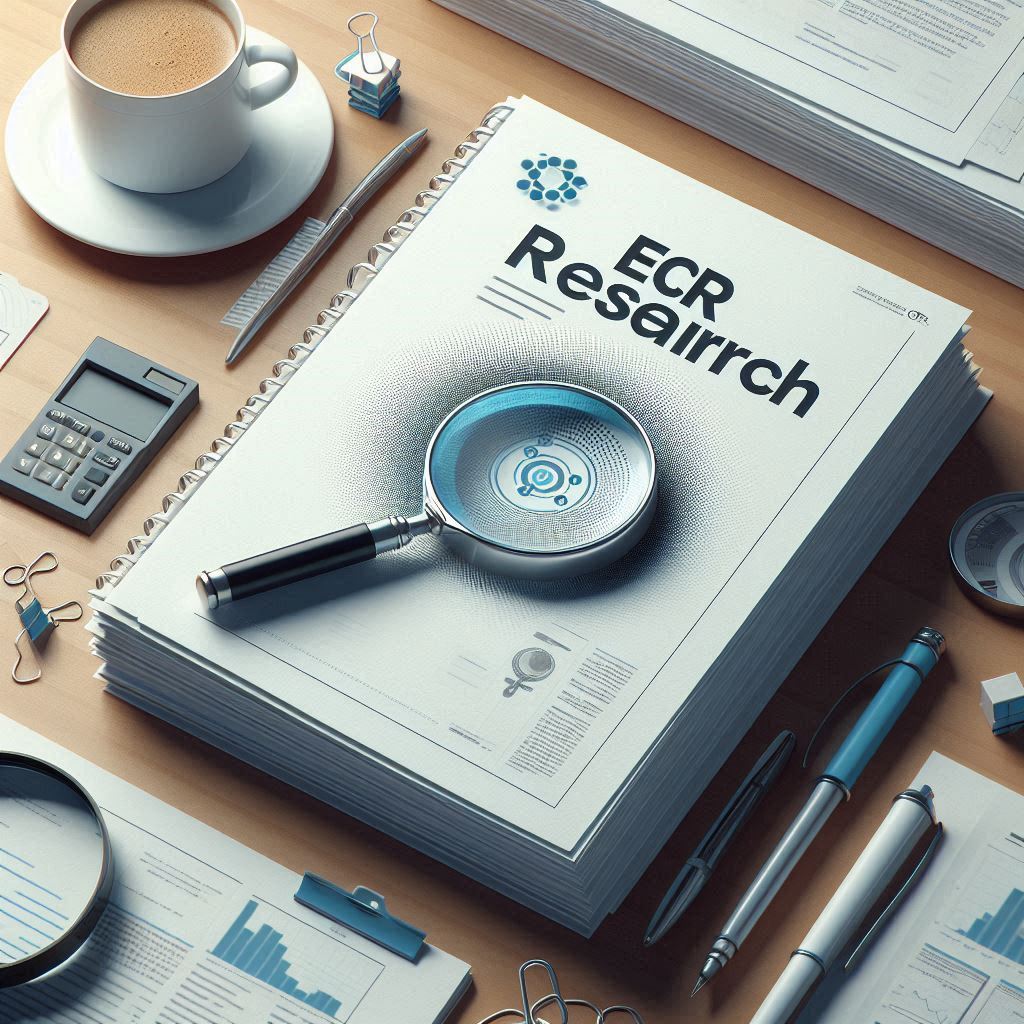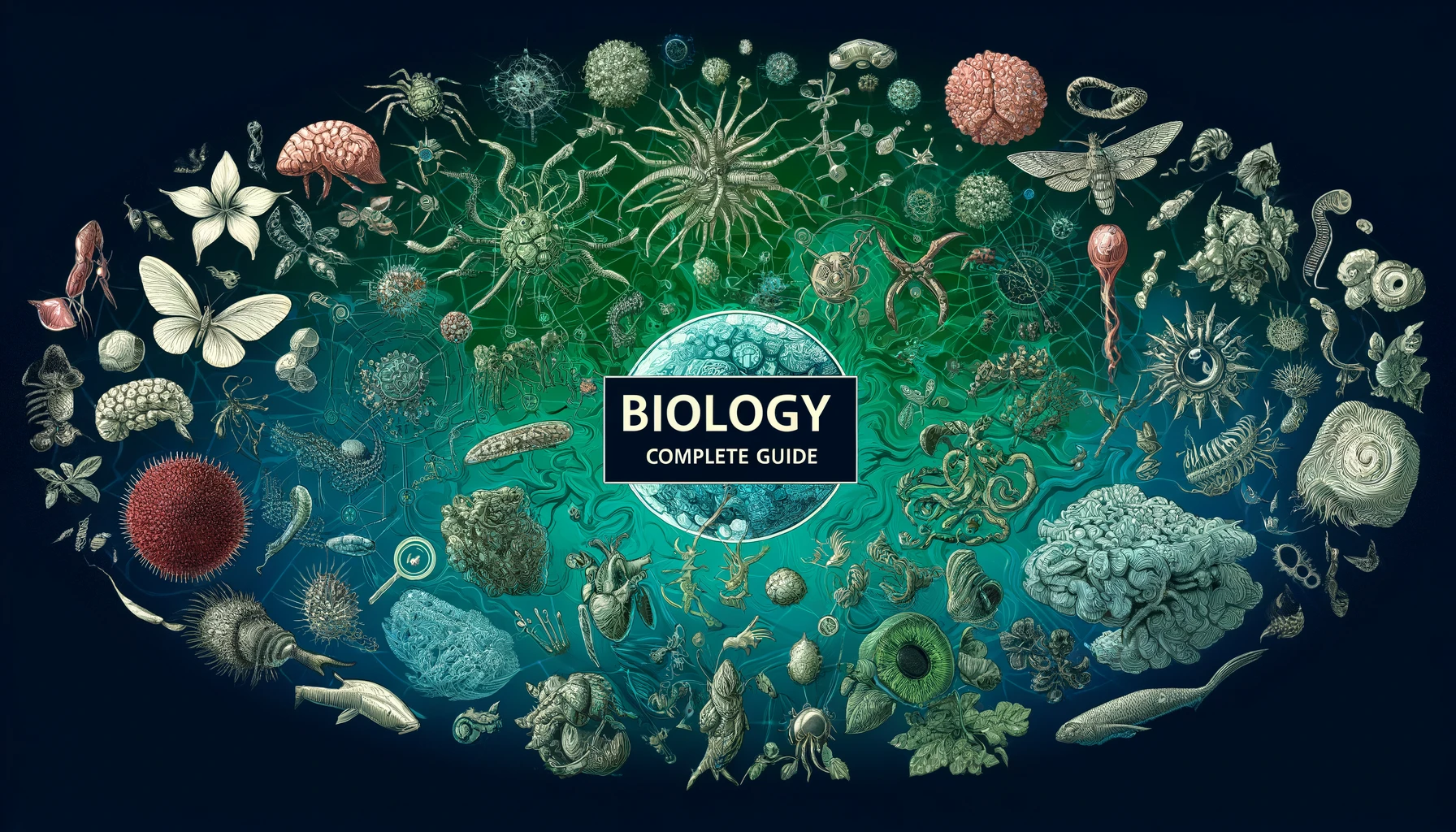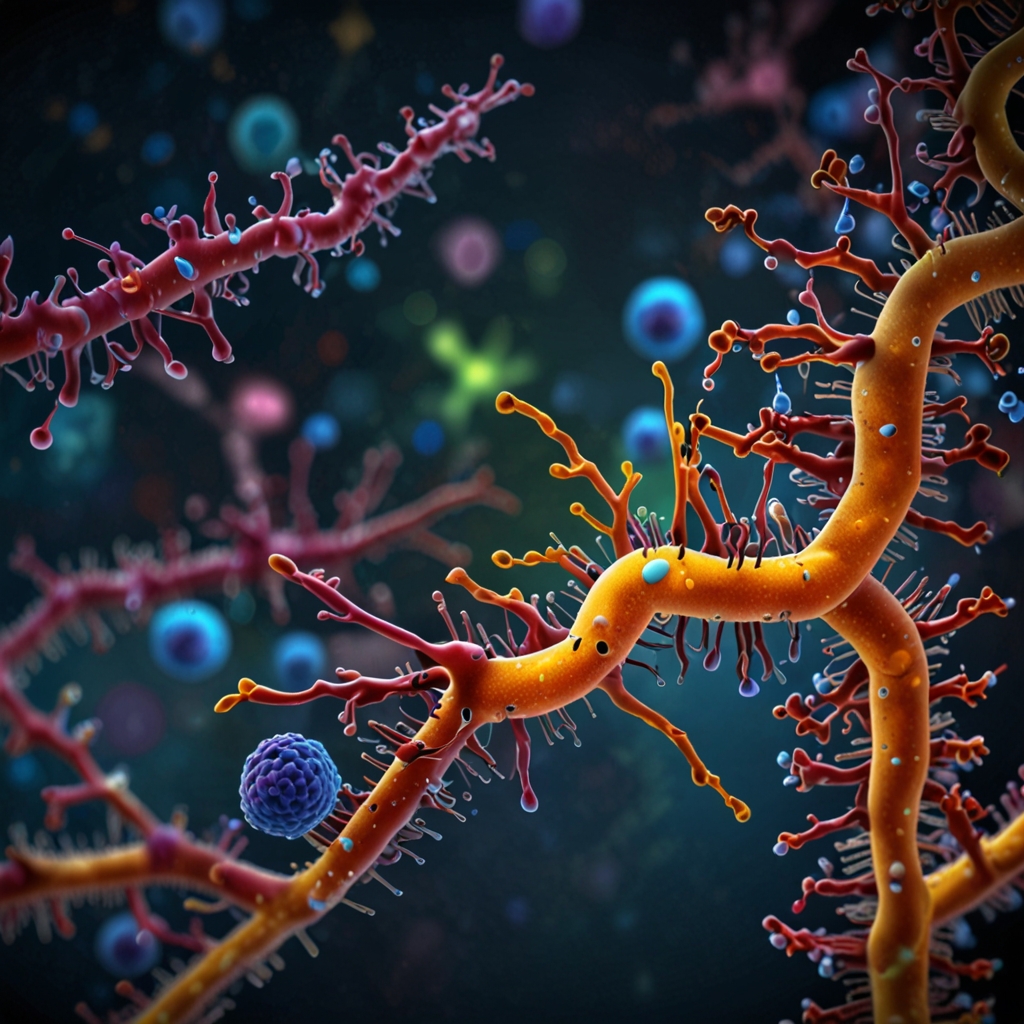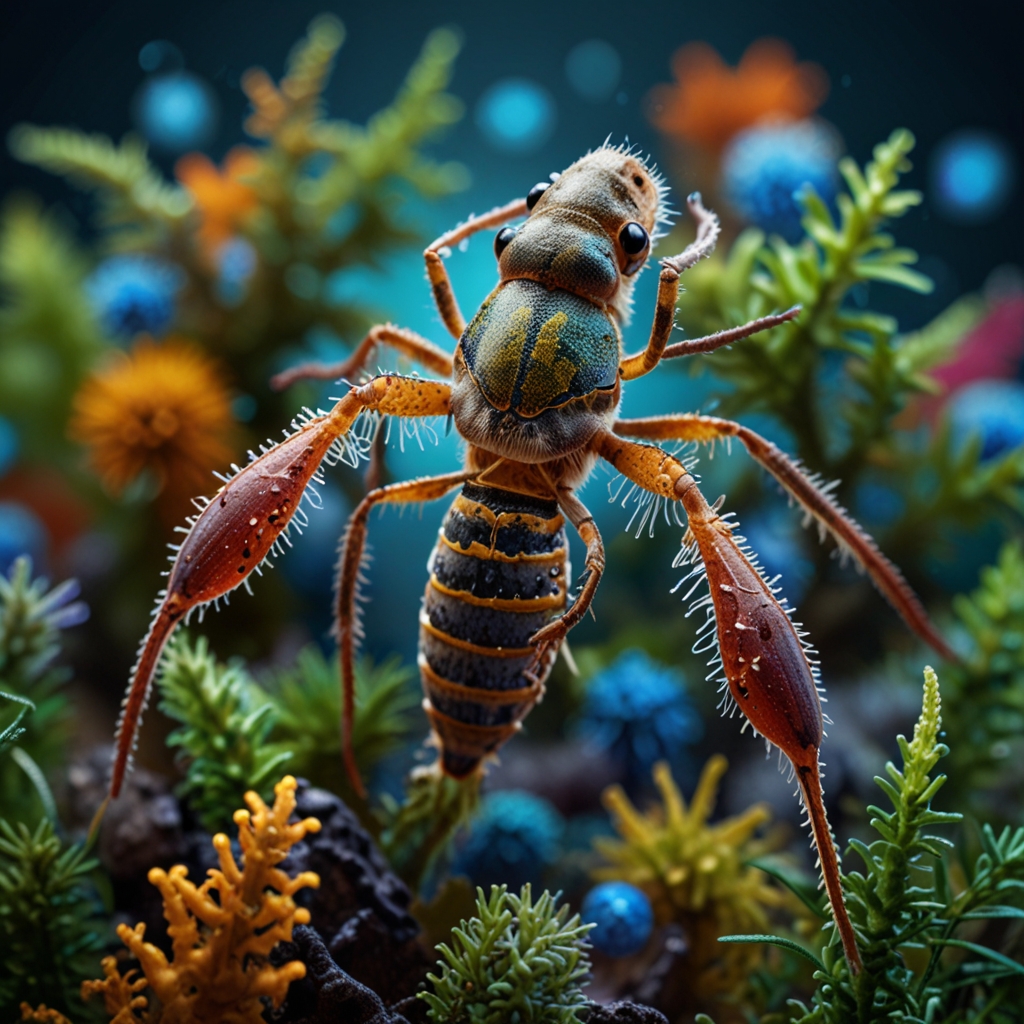8.1 – Transport in Plants
Xylem and Phloem
Plants contain two types of transport vessel:
- Xylem vessels – transport water and minerals from the roots to the stem and leaves.
- Phloem vessels – transport food materials (mainly sucrose and amino acids) made by the plant from photosynthesising leaves to non-photosynthesising regions in the roots and stem.
These vessels are arranged throughout the root, stem and leaves in groups along with a part called the cambium (which has cells that divide to produce more xylem and phloem cells – it is present between the xylem and phloem) called vascular bundles.

8.2 – Water Uptake
Root Hair Cells

- Gradual increase in surface area (increases rate of movement in cells)
- Root hairs have thin walls
- Cells of root hairs have high mineral and low water concentration for easy water absorption (some minerals may be absorbed by diffusion based on the concentration)
- Cells have mitochondria in large amounts for provision of energy for active transport
Water Movement from Roots to the Leaf
Osmosis causes water to pass into the root hair cells, through the root cortex and into the xylem vessels. Once the water gets into the xylem, it is carried up to the leaves where it enters mesophyll cells. This is called root pressurewhich causes water to be pushed into the stem.

So, the pathway is:
ROOT HAIR CELL → ROOT CORTEX CELLS → ENDODERMIS → XYLEM VESSELS → MESOPHYLL CELLS.
The cortex becomes turgid and helps in support; the epidermis prevents water loss and protects from bacteria.
Investigating the Movement
- The pathway can be investigated by placing a plant (like celery) into a beaker of water that has had a stain added to it (food colouring will work well).
- After a few hours, you can see the leaves of the celery turning the same colour as the dyed water, proving that water is being taken up by the celery.
- If a cross section of the celery is cut, only certain areas of the stalk is stained with the dye, showing that the water is being carried in specific vessels through the stem – these are the xylem vessels.

Importance of Water
- Photosynthesis to provide glucose
- To keep a plant turgid and leaves rigid
- As a transport medium
- For biochemical reactions
- To aid diffusion of CO2
Minerals are also Very Important
Minerals are needed for specific functions in the plant and to be present in roots so that they have a low water potential for easy osmosis to take place. These minerals include:
- Magnesium: absorbed as Mg2+ ions; forms part of chlorophyll (deficiency causes severe symptoms with leaves turning yellow from the bottom first).
- Nitrogen: absorbed as NH4+ and NO3– ions; needed for making proteins such as enzymes (deficiency causes severe symptoms. The plant is stunted with a weak stem and yellowing, dying leaves).
Introduction to the Transpiration Pull, Root Pressure and Ascent of Sap
The transpiration pull is an important process. It has 4 main steps:
- Water is drawn up by the xylem to replace water lost in the leaves [ascent of sap]
- Water and dissolved minerals cross cells of endodermis
- Water crosses the cortex cells by osmosis. Most, however, moves by suction through freely permeable cellulose cell walls
- Water enters root hair cells from a thin film of water surrounding soil particles by osmosis.
*Note that root pressure is the process of step (4), followed by (3) and then (2). The ascent of sap is caused due to the transpiration pull and root pressure.
Ion Uptake and Concentration of Oxygen Relation
Studies have shown us that:
- Cells can select which ions enter from the soil solution as each protein carrier in the cell membrane is specific. This is known as selective uptake.
- Any factor affecting respiration (oxygen levels, pH and temperature) can reduce or increase uptake.

How do Minerals get into the Soil?
Minerals come into the soil by rivers that are flooding; breaking down of bedrock by weathering, plant roots or burrowing animals; and from decomposed plants and animals (microbes return minerals to the soil).
*Note that the minerals can get leached (go deep into the soil) with rainwater.
Fertilizers are another way several minerals can get into the soil. They are used because:
- There is a lack of minerals
- There are no minerals for a desired crop to grow
- Of intensive farming (continuous farming without a break – soil has no time to regain minerals.
There are 2 types of fertilizers: natural/organic fertilizers (sewage sludge, animal manure and compost) and artificial fertilizers (NPK – nitrogen, phosphorous and potassium). Though providing minerals is important, an excessive use of fertilizers can be negative in the following ways:
- Kills crops as it makes the soils water potential low and fills up air spaces and water would thus exit from the plant, leading to wilting.
- Kills aquatic life due to run-off to a nearby water body. This can cause problems of eutrophication.
Eutrophication explained
- Rich minerals enter the water and boost growth of algae, blocking sunlight for sea plant, thus stopping their photosynthesis.
- The plants die and the bacteria decompose them, and any dead algae and will use up the oxygen in the water, making the water body oxygen-deficient.
- Fish and insects will die out due to lack of food (produced by plants) and oxygen and bacteria will decompose these as well.
- The biological oxygen demand (BOD) gets high and soon the bacteria will die out, and only anaerobic bacteria will survive.
8.3 – Transpiration
What is Transpiration?
Transpiration is the loss of water vapour from plant leaves by evaporation of water at the surfaces of the mesophyll cells followed by diffusion of water vapour through the stomata.
Transpiration:
- is an accidental process, which may be advantageous and disadvantageous.
- happens mostly on the lower surface due to the presence if more stomata and a thin cuticle.
The Leaf Tissue

The Transpiration Stream
The Transpiration Stream is one of the advantages of transpiration. It occurs in the following way:
- Leave cells have a layer of moisture to aid diffusion of carbon dioxide into cells. This moisture exits cells by exosmosis. This may evaporate into a vapour and will enter the leaf tissue. The excess will exit into the air from the stomata by diffusion. As transpiration occurs, the water potential gradient is lowered in the mesophyll cells.
- The neighbouring xylem cells now have a higher water potential and thus water will exit those cells by exosmosis and enter the mesophyll cells by endosmosis.
- This causes a lower water potential in the xylem and therefore, water is pulled up from the roots by the xylem.
- This makes the water potential lower in the roots and thus, water enters the root hairs by endosmosis.
This is a continuous suction force, caused due to transpiration, known as the transpiration stream.
Ascent of Sap
The root pressure and the transpiration stream will allow water to travel through the xylem from the roots to the leaves. This is known as the Ascent of Sap. The water is held together by cohesion. Sap: water and minerals; what is stored in a leaf vacuole.
Advantages and Disadvantages of Transpiration
| Advantages | Disadvantages |
| Enables a suction force known as the transpiration stream, which allows water and minerals into the plant. | If more water evaporates from the leaves of a plant than is available in the soil to move into the root by osmosis, then wilting will occur. This is when all the cells of the plant are not full of water, so the strength of the cell walls cannot support the plant and it starts to collapse. This may kill a plant as there is no water to replace the transpired water. |
| Cools down the plant as water is lost. | |
| Excess water is lost. |
Factors Affecting Transpiration
Transpiration is affected by the structure of the leaf and conditions in the atmosphere.
Leaf Structure
- Surface Area: lower surface area means lesser transpiration. Some plants have narrow leave and if leaves are modified into spines which are adaptations to lower transpiration.
- Sunken Stomata: some plants have sunken stomata (stomata pushed inside the leaf tissue) and hair. The sunken stomata aren’t as exposed to the sun and air. The hair traps water which could have been lost. This will make sure the water potential is constant and this slows down the rate of transpiration. There is only 1 opening for vapour to exit, so very little water is transpired.
- Thick Cuticles: cuticles are waxy waterproofing layer; thus, thicker cuticles reduce water loss from the leaves.
Atmospheric Conditions
- Temperature: transpiration increases with increasing temperature. If temperature increases the water molecules will have more kinetic energy, causing them to move faster which means they will evaporate more easily.
- Humidity: transpiration decreases with increasing humidity. In a humid environment, air is almost saturated with water vapour. This means there is hardly any concentration gradient between the airspaces inside the leaf and the air outside the leaf, therefore the rate of evaporation is slow.
- Light: greater the intensity of light, higher transpiration. Lesser transpiration in dark as stomata will be close as other processes such as photosynthesis will not occur and thus there will not be oxygen produced to exit. Transpiration is accidental due to the opening of stomata; thus, the rate is low.
- Concentration: there will always be a higher concentration of water inside the plant than outside the plant, thus water will not diffuse inside the leaf.
- Wind: the more wind, the higher the transpiration as there is more gases present for exchange due to the ventilation, thus the stomata will open more. Water is blown away so the concentration is lower outside and thus water vapour will diffuse outside.
Adaptations to Reduce Transpiration


During wilting, there is more transpiration than absorption and thus the leaves become flaccid – day time. In the night, absorption is higher so the plant can recover. It is a mechanism to reduce transpiration as when the leaves collapse, the stomata closes and lesser surface area of the leaves is exposed. This can be negative as this reduces photosynthesis. These adaptations that cut down transpiration which can lead to lesser absorption as there is no transpiration stream and a cut in photosynthesis. This could lead to the death of a plant.
Transpiration Experiments
Experiment 1: Cobalt Chloride Indicator
- Cobalt Chloride paper is an indicator for water. It is blue when dry and turns pink if water is present.
- The paper is put on the upper and lower surface of the leaf to see where are more stomata present. It is covered with a glass slide so the outside moisture doesn’t react with the paper.
- The paper on the bottom surface will turn pink faster indicating there is more stomata present on the lower surface.
- The upper paper may turn pink faster sometimes if the person conducting the leaf had wet hands or the leaf was moist from first or the glass slide may have not been placed correctly.

Experiment 2: 4-Leaf Experiment
- The use of Vaseline acts like a barrier between the air and the stomata. This can be noted because the leaf that had Vaseline applied on the bottom and on both sides showed little to no change respectively. The leaf that had Vaseline applied on the top did show significant changes, thus proving that stomata are present on the bottom of the leaf. Finally, the leaf that had no Vaseline applied at all showed maximum change in size and appearance.

Experiment 3: Using a Bubble Potometer


8.4 – Translocation
The Phloem
The phloem transports food produced by photosynthesis to the roots for storage or from the roots for usage. This is a 2-way transport system. The phloem is involved in the process of translocation (transport of food); it is made of sieve tubes and companion cells; pores in sieve plates allow sugars and amino acids to pass from cell to cell; the companion cells carry out life processes for the sieve tube; the cells have a cytoplasm as it must be alive for the transport of food, but the cells have no organelles as that would impede (block) movement of food. The food is stored in the cortex cells of the roots.
Aphids
Parasites known as aphids feed on plant food from outside the phloem. Systemic insecticides are sprayed onto plants, they get absorbed into the phloem and kill the aphids. These don’t affect the nearby plants and soil.
Translocation is always from Source to Sink!
During summer and autumn, plants continuously produce glucose, converts it into sucrose and sends it to the roots to store. The source is the leaves and the sink is the roots.
During spring, the stored food in the roots, the source here, is sent back to the rest of the plant, when leaves fall off and there is no photosynthesis taking place. The sink here is the rest of the plant.

